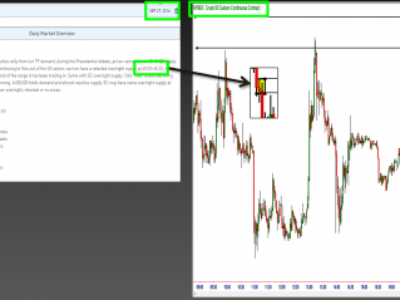Options – What Are the Right Questions to Ask?
Whenever we contemplate a trading opportunity where we are considering using options there are three key questions we must answer:
First, with respect to the price of the underlying asset, do I believe that it is most likely to go up, down, or sideways; or do I expect a large movement but with unpredictable direction (the opposite of sideways)?
Second, completely separately from its price, what do I believe about the implied volatility of the underlying asset? Is it most likely to increase, to decrease or to change in an unpredictable fashion? (Implied Volatility (IV) is a measurement of the option-buying crowd’s expectation of future price movement of the underlying asset. The more they expect it to move, the more they will pay today for all of its options, both puts and calls).
Third, how aggressive or conservative do I want to be? A very aggressive trade has a large potential payout, if it works. That large potential reward always comes at a cost. That cost may take the form of a high probability of failure. Or, it may involve a potential loss that is large in size or even unlimited. Or both. A more conservative trade, on the other hand, has a smaller potential gain and also less risk. Any particular option trade, with its own choice of underlying, strategy, expiration, and strike prices, always falls on a continuum from very aggressive to very conservative. If we go all the way down the conservative route, we eventually get to a type of trade that is guaranteed not to lose but is also guaranteed to pay only the same return as we could get on treasury bills – in other words, a trade not worth the bother. Our option trades can be constructed to have just the degree of aggressiveness that is appropriate to us, but we must know how to do it or ask the right questions.
Most new option traders are clearly aware of the first question about the underlying asset price. Almost everyone knows that call options go up in value when the underlying goes up, but as a larger percentage, and that put options go up when the underlying goes down, also amplifying that move.
It is the second and third questions that trip up many new option traders. Many, for example, do not understand sufficiently just how important the level of IV is to the success of their trade, or that being too aggressive or too conservative can hurt them as well.
The simplest option trade that one can imagine would be to buy call options on a stock when we think it will go up. In the worst case, if we are wrong, we are out only the cost of the call option. If we are right, we have potentially unlimited profit and the calls should increase by a larger percentage of their cost than the stock itself does. It seems simple, but there is more to this apparently simple trade than meets the eye. In fact, a call option can go down in value when the underlying stock goes up.
This is because the stock price is just one of the three main forces acting simultaneously on every option at all times. The other two are:
- The change, if any, in implied volatility (trader expectations of future price movement)
- The passage of time
And all three of these forces act differently on every call option for the same underlying asset depending on which strike price and expiration date we choose.
In our Professional Option Trader course, we teach a straightforward, step-by-step method of selecting the particular strategy and the specific options to use in any situation. This method takes into account the expected effects of all three of these main forces. I obviously can’t teach the course here in these brief articles, but here are a few details about how each force affects the price of a specific call option:
Stock price movement
- Affects calls with lower strike prices more than calls with higher strike prices, in cents per share
- But calls with lower strikes cost more than those with higher strikes so
- Stock price movement makes more of a percentage difference with higher strikes
- Higher strikes have a higher probability of expiring worthless
- So all else being equal, buying lower strikes is more conservative and higher strikes more aggressive.
- The relative performance of lower and higher strikes changes over time with the differences becoming much more pronounced near expiration.
Changes in implied volatility (IV)
- When IV rises, this increases the value of all call (and put) options, separately from the effect of the change in the underlying price.
- When IV falls the value of all options (puts and calls) decreases.
- So a rise in IV helps call owners, and a drop in IV hurts them.
- The closer to the stock’s current price the call strike price is the more that call’s value will be affected by changes in IV.
- If a rise in the stock price is accompanied by a large drop in IV, the value of some calls could go down.
The passage of time
- Nearly every option loses a portion of its value every day – this is called time decay.
- If the stock price remains lower than the strike price of a call option, that option will lose all of its value by expiration day.
- Even if the underlying stock moves up past a call’s strike price, if enough time has passed a given call option may be worth less than its cost due to time decay.
- The passage of time changes the effect on a given call option of the other two forces. Changes in IV matter less and less as time passes. The effect on the call of changes in the stock price also changes, being magnified for calls with lower strikes, and muted for higher strikes.
So, it is clear that what seems like a dirt-simple strategy, buying calls on stocks on which we are bullish, has a bit more to it than it would first appear. Can it be done profitably? Yes! With the right identification of the bullish opportunity in the first place, and the selection of the strike price and expiration to take into account all three forces, it can. We’ll go into a few more details in future articles. The important thing is to get yourself educated.
For comments or questions on this article, contact us at help@tradingacademy.com.













